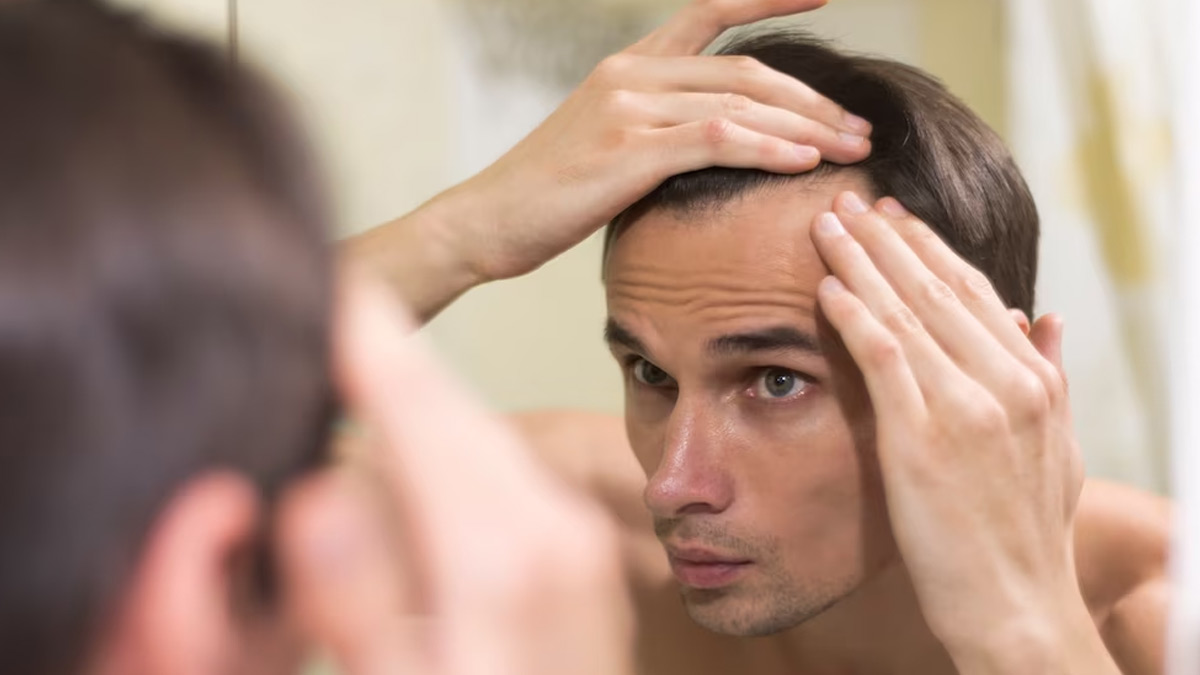
Receding temples, also known as temple hair loss or frontal baldness, is a common concern affecting both men and women. It refers to the gradual thinning or receding of hair along the temples, which can eventually lead to a more prominent forehead. While receding temples can be a natural part of ageing, it can also be influenced by various factors such as genetics, hormonal changes, lifestyle choices, and certain medical conditions. To know more about receding temples OnlyMyHealth reached Dr S K Gupta, Dermatologist at Darbhanga Medical College and Hospitals, Bihar.
Table of Content:-
Root Causes Behind Receding Temples
Genetic Predisposition
Family history plays a significant role in receding temples. If your parents or close relatives have experienced frontal hair loss, there is a higher chance that you may also face similar concerns.
Hormonal Factors
Hormonal imbalances, particularly an increased sensitivity to the hormone dihydrotestosterone (DHT), can contribute to hair loss, including receding temples. DHT affects hair follicles, causing them to shrink and produce thinner and shorter hair strands.

Ageing
As individuals age, hair growth slows down, and follicles may become less active. This can result in gradual hair thinning, including in the temple area.
Hairstyling Practices
Frequent and prolonged use of tight hairstyles, such as ponytails, braids, or cornrows, can exert excessive tension on the hairline, leading to traction alopecia. Over time, this can contribute to the recession of temples.
Medical Conditions
“Certain medical conditions like alopecia areata, thyroid disorders, scalp infections, or autoimmune diseases can trigger hair loss, including receding temples”, says Dr Gupta.
Consulting a doctor can help identify and manage any underlying health issues.
Also read: Ingrown Hair: Causes, And Treatment Options To Get Rid Of It
Dealing with Receding Temples
Seek Professional Advice
If you notice significant hair loss or receding temples, it is essential to consult a dermatologist or a trichologist. They can evaluate your condition, identify potential causes, and recommend appropriate treatment options.
Medications and Topical Treatments
Prescription medications like biotin can help slow down hair loss and stimulate regrowth.
As per Dr Gupta, there are topical treatments available in the market that can be directly applied to the affected areas to promote hair follicle activity.
Platelet-Rich Plasma (PRP) Therapy
PRP therapy involves injecting the patient's own platelet-rich plasma into the scalp to stimulate hair growth. This treatment can be effective in improving the density and quality of hair, including the temple area.
Hair Transplantation
In more advanced cases of receding temples, hair transplantation can be a viable option. This procedure involves relocating hair follicles from other areas of the scalp to the temples, creating a more natural hairline.

Lifestyle Modifications
Adopting a healthy lifestyle can promote overall hair health. Ensure a balanced diet rich in vitamins, minerals, and protein. Regular exercise, stress management, and adequate sleep are also essential factors in maintaining healthy hair.
Hairstyling Considerations
Avoid hairstyles that pull the hairline tightly, as they can contribute to further hair loss. Opt for looser hairstyles and avoid using excessive heat or chemical treatments that may damage the hair.
Also read: Ayurvedic Remedies For Frizzy Hair, Expert Explains
Bottomline
Understanding the underlying causes and available treatment options can help individuals effectively address this concern. It is crucial to consult with a medical professional to determine the most suitable course of action based on the individual's unique circumstances. With advances in medical treatments and lifestyle modifications, managing receding temples is becoming increasingly feasible, allowing individuals to regain their hairline and restore their confidence.
Also watch this video
How we keep this article up to date:
We work with experts and keep a close eye on the latest in health and wellness. Whenever there is a new research or helpful information, we update our articles with accurate and useful advice.
Current Version